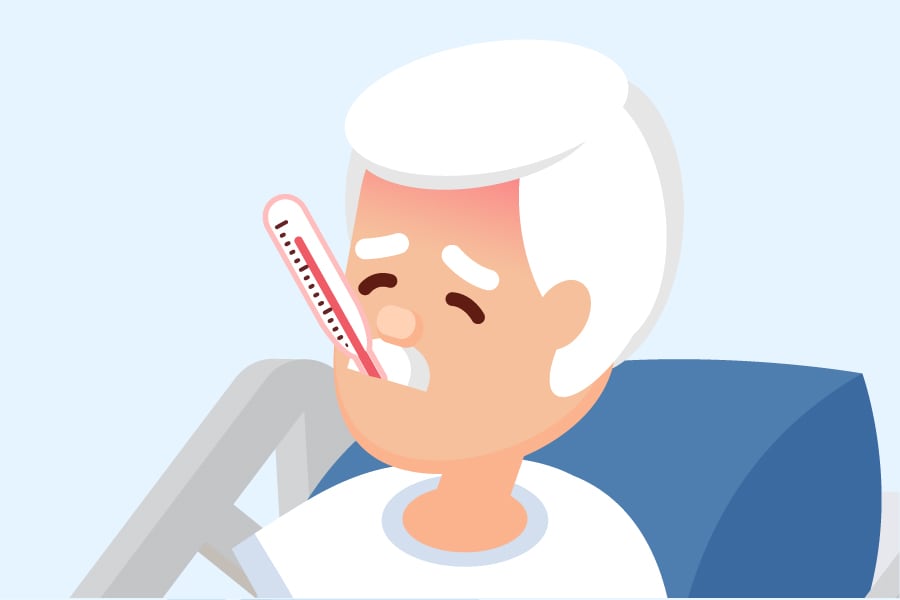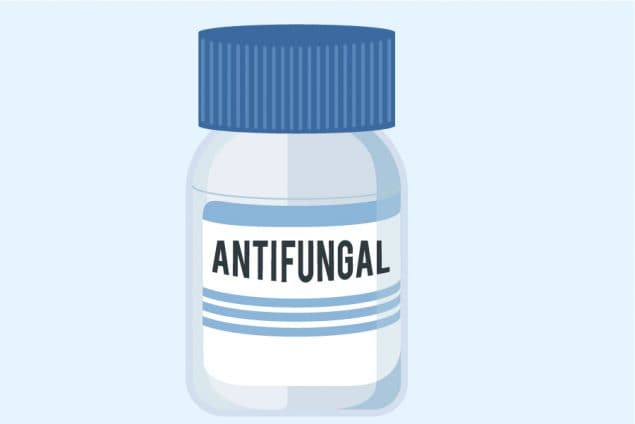About Blastomycosis

Fever is a common symptom of blastomycosis.
Symptoms
About half of people who are infected with the fungus Blastomyces have symptoms.1 The symptoms of blastomycosis are often similar to the symptoms of other lung infections, and can include:2,3
- Fever
- Cough
- Shortness of breath
- Night sweats
- Muscle aches or joint pain
- Weight loss
- Chest, rib, or back pain
- Fatigue (extreme tiredness)
Some people with blastomycosis may also develop skin lesions, such as raised bumps, blisters, or ulcers.
Symptoms of blastomycosis usually appear between 3 weeks and 3 months after a person breathes in the fungal spores.4
Severe blastomycosis
In some people, particularly those who have weakened immune systems, blastomycosis can spread from the lungs to other parts of the body, such as the skin, bones and joints, and the central nervous system (the brain and spinal cord).2,5
Diagnosis and testing
What to expect
Healthcare providers use medical and travel history, symptoms, physical examinations, and laboratory tests to diagnose blastomycosis. They will likely test for blastomycosis by taking a blood sample or a urine sample and sending it to a laboratory.
Healthcare providers may do imaging tests such as chest x-rays or CT scans of lungs. They may also collect a sample of fluid from your respiratory tract (airway) or perform a tissue biopsy, in which a small sample of affected tissue is taken from the body and examined under a microscope. Laboratories may also see if Blastomyces will grow from body fluids or tissues (this is called a culture).
When to test
People should get tested for blastomycosis when they have been to an area where the fungus lives in the last 3 weeks to 3 months and:
- have symptoms of pneumonia,
- have been given antibiotics that are not working.
Healthcare providers may test for blastomycosis if a patient has new skin lesions (such as raised bumps, blisters, or ulcers) or has been in an area or participated in an activity that has been linked to other people who recently got blastomycosis.
Test results
The length of time it takes for test results to come back depends on the type of test. Results from a blood test or a urine test are usually available in a few days. When healthcare providers send a sample to a laboratory to be cultured, the results could take a couple of weeks.
Treatment

Most people who have blastomycosis will need antifungal treatment.
Most people who have symptoms from blastomycosis will need treatment with prescription antifungal medication. Itraconazole is a type of antifungal medication that is typically used to treat mild to moderate blastomycosis. Amphotericin B is usually recommended for severe blastomycosis. Your doctor may test your blood to check if there is enough antifungal medication in your body. Depending on the severity of the infection and your immune system, the length of treatment can range from six months to one year.
- Klein BS, Vergeront JM, Weeks RJ, Kumar UN, Mathai G, Varkey B, et al. Isolation of Blastomyces dermatitidis in soil associated with a large outbreak of blastomycosis in Wisconsin. N Engl J Med. 1986 Feb 27;314(9):529-34.
- Saccente M, Woods GL. Clinical and laboratory update on blastomycosis. Clin Microbiol Rev. 2010 Apr;23(2):367-81.
- Baumgardner DJ, Halsmer SE, Egan G. Symptoms of pulmonary blastomycosis: northern Wisconsin, United States. Wilderness Environ Med. 2004 Winter;15(4):250-6.
- Klein BS, Vergeront JM, Davis JP. Epidemiologic aspects of blastomycosis, the enigmatic systemic mycosis. Semin Respir Infect. 1986 Mar;1(1):29-39.
- Chapman SW, Dismukes WE, Proia LA, Bradsher RW, Pappas PG, Threlkeld MG, et al. Clinical practice guidelines for the management of blastomycosis: 2008 update by the Infectious Diseases Society of America. Clin Infect Dis. 2008 Jun 15;46(12):1801-12.